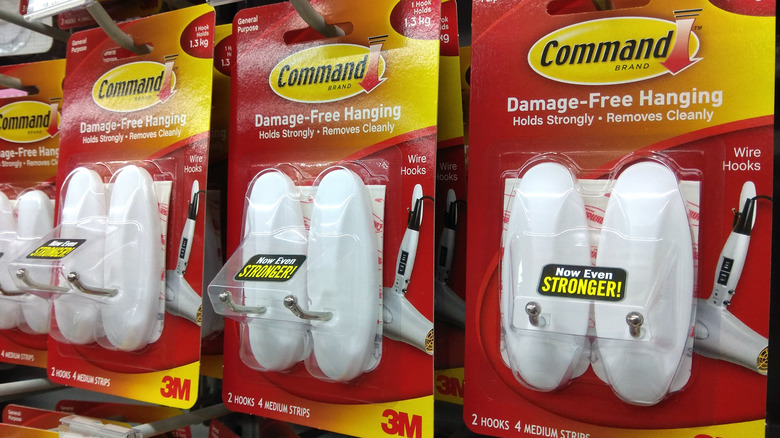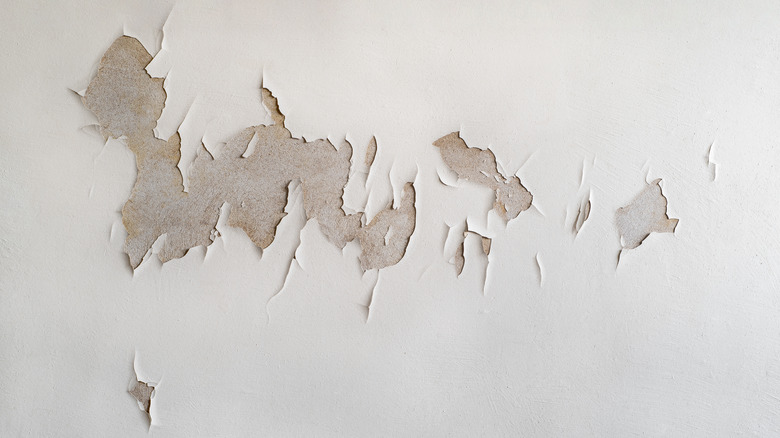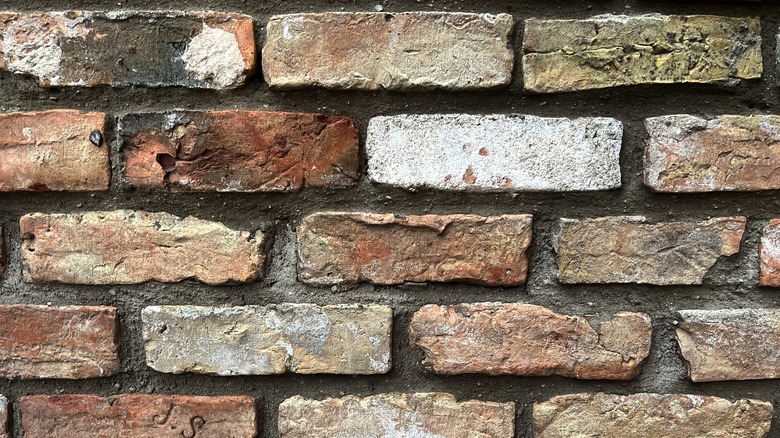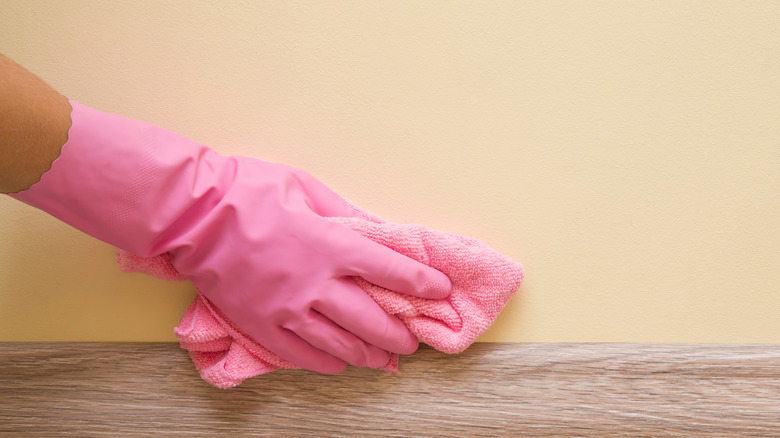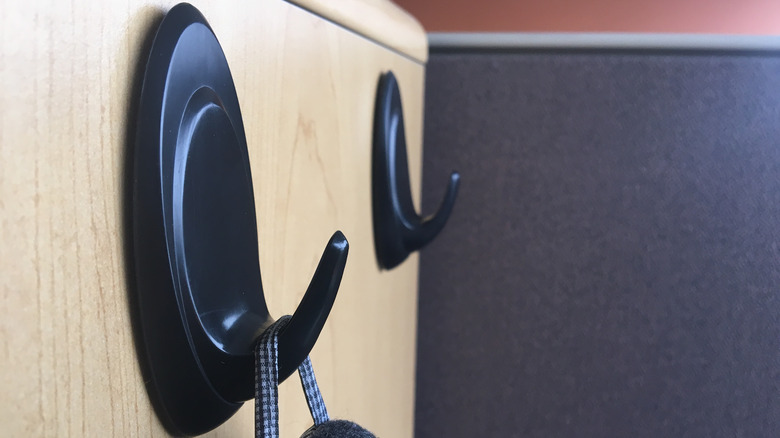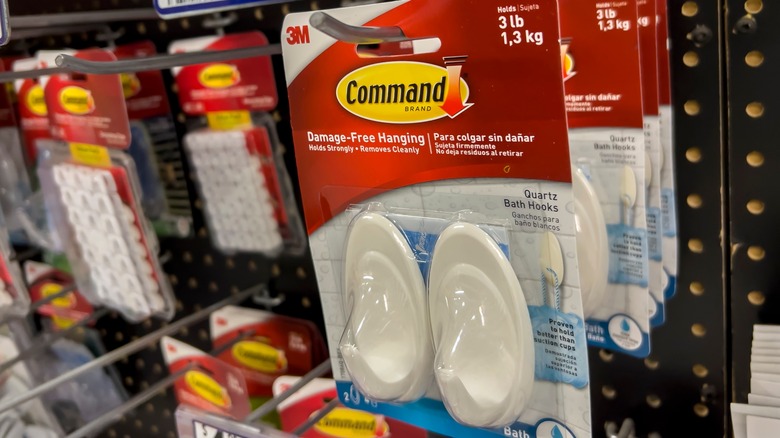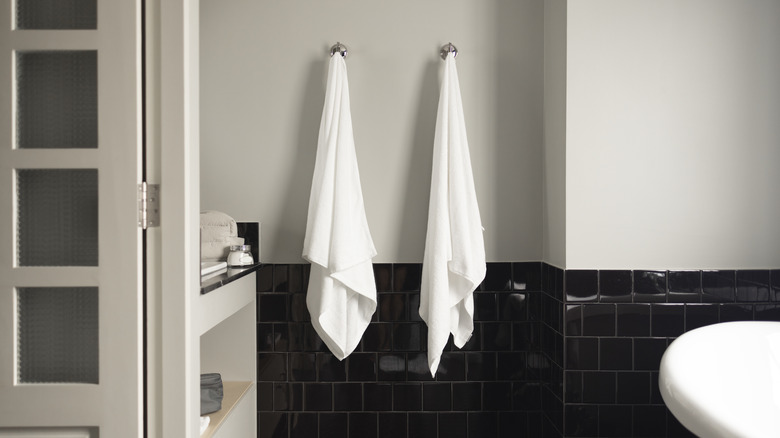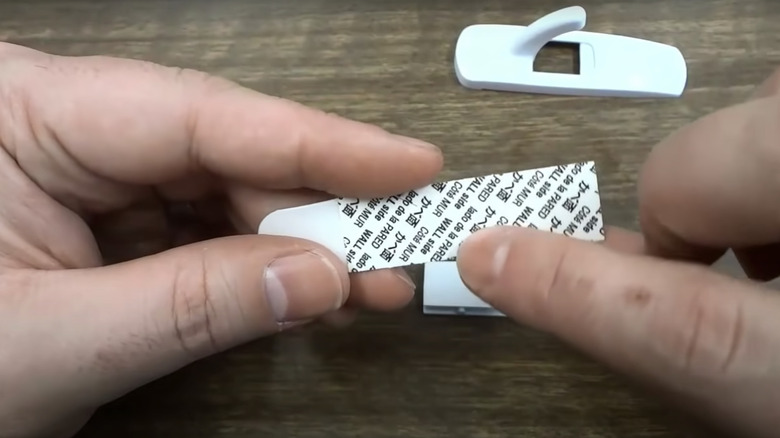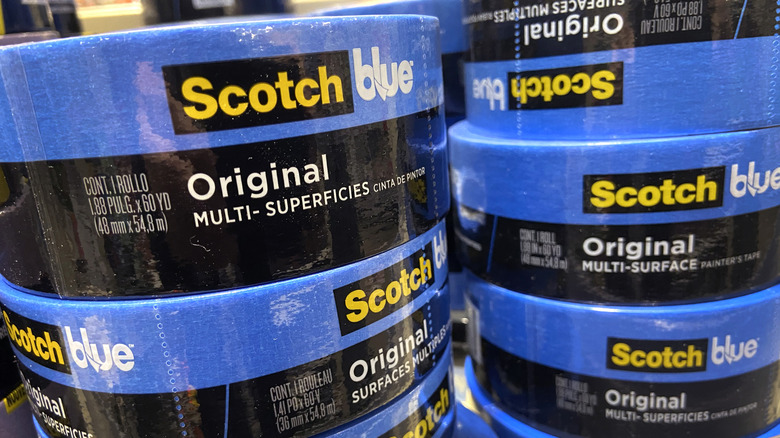You've Been Using Command Hooks Wrong All Along & Had No Idea
It's easy to fall in love with the idea of a product that has thousands of uses and comes with a damage-free promise. But that love can quickly turn to hate when you have a chunk ripped out of your wall or find that your holiday decorations have all fallen down while you were out of the house. Don't swear off an amazing product because you've had less-than-stellar results, though. You may actually have simply been using your Command Hooks wrong this entire time.
Due to Command products being so seemingly simple, many people do not even read the instructions before using them, which can often lead to less than satisfactory results. There are also great hacks and tricks not printed on the back of the product that countless long-time users swear by. Choosing the best Command Hooks and using them correctly can allow the product to be used for as long as possible with little to no damage in the home. Sticking to easy, smart, and well-proved uses can give you the best results. Remember, always consult the specific instructions for the Command Hooks you're using, usually on the back of the packaging, even if it seems like common sense.
The way you've been removing them is wrong
When it comes time to take down your Command Hooks, or to move them, you may make the common mistake of trying to yank them right off the wall. Doing this can cause the paint to come away with the adhesive on the back of the strip or even a bit of the wall itself. When you're putting up your Command Hooks, you may notice small arrows on the bottom or side of the strip pointing down or away from your hook. That is the direction you should slowly pull when it's time to remove them.
But what if the tab on your strip is broken or covered up? Don't worry, there's a hack for that. All you'll need is a hair dryer and a thin strong line, like dental floss or fishing wire. You'll use your hair dryer to heat the strip up, but be careful not to use high heat or get too close, as you could cause the paint to bubble. Once the strip is warm, carefully slide the line of dental floss between the strip and the wall and gently saw your way down; back and forth motions, not pulling. If there is any adhesive left on the wall, you should be able to rub it away with either your fingers or a microfiber cloth.
You haven't been using them on smooth surfaces
You may notice that your Command Hook instructions will direct you to put the adhesive against a smooth surface. It can be tempting to ignore directions of this type, but they're there for a reason. Command Hooks have the best grip on smooth, uninterrupted surfaces. This means no heavily textured walls, such as brick, or along cracks, and especially not on curved walls. While the strip may be sticky enough to hold to rough surfaces at the start, it will not perform to the same standards that a hook on a smooth, non-porous surface would, and they are likely to eventually fall off. One Good Thing recommends using a little bit of hot glue on the back of the strip to keep it anchored to the brick.
For your wood surfaces, the type of surface will impact how well the Command Hook can hold. Varnished wood may be best, but any smooth wood can get the job done. Rough, unfinished, and unvarnished wood can be a little trickier. Avoid any spots with knots, and if you have the ability, try to sand the wood smooth if it's not already finished.
You don't clean the surface before applying them
Proper wall prep and cleanliness are essential for your Command Hook to stick properly. You should avoid using other household cleaners to wipe down your walls as they could leave a residue that prevents proper adhesion. While the hook may stick at first, it is highly unlikely to last. Instead, Command recommends using isopropyl alcohol to wipe down the surface.
You should also note that you cannot use Command Hooks on fresh paint. For one, the alcohol prep step could damage the finish of the new paint. And two, you want the paint to be fully cured before attempting to use a Command Hook. Check the paint's typical drying and curing time on the can and adjust for conditions like temperature and humidity. In general, oil-based paints, take about seven days to cure, and latex paints can take up to an entire month to fully cure. To make sure the surface is ready for alcohol prep, test the finish in an inconspicuous spot before beginning the Command Hook hanging process.
You're using the wrong kind of Command Hook
A hook is a hook is a hook, right? Not necessarily. While you may be using a hook with the right weight requirement, it may not be the right type. Command has developed a wide variety of hooks for every space, style, and function. So, when considering your project, be sure to look into what type of hook would work — and look — best from the available categories
Of course, there are the original clear, general-purpose hooks. But Command Hooks have evolved to provide decorative options, and their selection is ever-expanding. The metallic ones come in a few different colors, usually silver or darker brushed metal, so they'll match up well with most aesthetics. Command also offers other products, like caddies and shelves. So, don't feel the need to use a hook for everything when there may be another more functional solution for your needs.
When deciding on the right hook for the job, consider the size of the hook, the location, and its visibility in terms of matching with the rest of the room. Command offers a handy Product Selector to help identify what will work best for your project, especially in terms of weight requirements and the type of adhesive strip for your hook.
You haven't pressed them down long enough
Many people make the mistake of not pressing their Command Hook's strip to the wall long enough. For example, the application directions say that the user should press firmly, and evenly, on the strip for thirty seconds. This is a critical step to ensure that the adhesive holds and creates a firm bond with the surface. Then, the hook should be pressed onto the other side of the strip for 30 seconds as well.
For most Command Hooks, once you've put it on the wall, there is no going back. Command Adjustable, however, can be moved up to three times within the first twenty minutes of application. These have a lesser amount of time needed for pressing to the wall as well. Command Adjustables Repositionable Clip, for example, instructs the user to hold the strip down for only five seconds once they have found their desired position for their clip.
You didn't know there were weight restrictions
When faced with such busy packaging, it is often easy to miss key pieces of information. It is possible that up until this point, you have had no idea that Command Hooks have specific weight ratings. Even knowing now, you may wonder if it's more of a guideline or a solid rule. If your hooks are being ripped off of the wall because you put too much weight on them, the chances of damage to your wall increase dramatically.
Your eyes might trick you into thinking a huge strip and a huge hook can hold up just about anything, but the only way to really know is to look at the packaging. Usually, this information is found in the upper right-hand corner of the package's front. Command has a helpful weight limit guide that can assist with approximating the weight of the items you intend to hang.
You've been putting non-bathroom hooks in damp areas
If you're using Command Hooks in damp or humid areas, you should be using Command's Bath Hooks. Other Command products aren't made for standing up against high humidity or direct water exposure, and their adhesive will lose its grip. However, Command says that these hooks have been tested and proven to stand up to humid environments, enough so that you can actually use them inside the shower, and that they actually hold better than suction cups.
These hooks come in both white and metallic colors and you can use them to hold just about all of your bathroom necessities, both inside and outside of the shower, from lightweight loofas to heavy shampoo bottles. They also carry a variety of other useful bathroom products, from shower caddies to mirrors, all the way up to objects as large as towel bars, allowing you to organize your whole bathroom.
You've put the hook side of the strip on the wall
Though it may not seem like it matters, it does. There is a sticky side meant to touch the wall, and one side for the hook. The backing on the strip will tell you which side is which. One will have "wall" printed on it, usually in black and in several languages, while the other side often has color and the Command logo. The Command side must go on the hook, while the wall side goes on the surface you're applying it to.
This is a really easy one to miss, especially if you're rushing or using really small strips or hooks, but it is just one of dozens of ways to improve the longevity and use of your Command products. If you are uncertain which side is which, you can also consult the back of the package that your Command product came in. Usually, there will be easy-to-read instructions with helpful pictures and a step-by-step process to follow.
You've used inside hooks outside
If you've used the same hooks to hang your string lights booth inside and outside, you may have noticed the ones outside didn't last. Temperature, weather, and surprisingly enough, UV light all have an effect on the adhesive you're using. Command Hooks meant for indoor use do not take these elements into consideration, and because of that, can quickly be ruined by the conditions outdoors. There are Command Hooks meant to be used outside, though, and they take everything the elements have to offer into consideration.
Outdoor use Command Hooks are specifically designed to be used outside. They are water-resistant, much like bath hooks, but also stand up against constant temperature changes, from -20°F to 125°F. They are UV resistant and often have different options in terms of designs to match your exterior decor. Whether you're just using them for the holidays or want them to hang something up long-term, be certain the hooks you use outside are rated for outdoor use.
You haven't been using painters tape
Even if you're removing the strips correctly, there is still a possibility of picking up paint when removing the adhesive, especially if the home is older and your walls have a delicate finish. To prevent that, all you need is a bit of painter's tape. This can make removing the strips easier if you're hanging something relatively lightweight. For pictures, posters, and small decorations, you can avoid possible damage to your walls by putting down a strip of painter's tape beforehand. This tape is less sticky than other tape and is specifically engineered to be removed without bringing any of the wall's paint with it.
I you don't want the tape to peek out from behind the hook, you can cut it to size so that it is completely hidden by the adhesive strip. This way, you can enjoy the seamless look while still putting a barrier between the hook and your wall's delicate surface.
